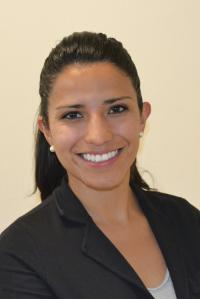Emilia Cruz awarded PhD degree
 Emilia Cruz, former oPAC hosted by the University of Liverpool, came back to the land of the scouse to defend her PhD. The thesis entitled “Modelling the effects of high luminosity optics in the upgrades of the Large Hadron Collider” was very well received by the examiners, who didn’t hesitate to acknowledge the great work done by the fellow.
Emilia Cruz, former oPAC hosted by the University of Liverpool, came back to the land of the scouse to defend her PhD. The thesis entitled “Modelling the effects of high luminosity optics in the upgrades of the Large Hadron Collider” was very well received by the examiners, who didn’t hesitate to acknowledge the great work done by the fellow.
The thesis addresses the difficulties arising from having high luminosity collisions in two proposed upgrades for the large hadron collider: the Large Hadron electron Collider (LHeC) and the High-luminosity LHC (HL-LHC). First the flexibility of the design of the interaction region was studied to find the optimal design that will achieve the highest luminosity with the least impact on the machine. Secondly, the impact of the fringe fields of the new quadrupoles to be implemented in the HL-LHC insertions was studied in terms of the stability of the beam.
Increasing the luminosity in the upgrades of the LHC, both in proton-proton and electron-proton collisions, comes with great challenges. Careful studies need to be performed to ensure the feasibility of the different lattices. Making use of the theory behind beam dynamics, and the tracking codes developed at CERN (MADX and SixTrack) Emilia was able to make an extended study regarding the feasibility of the integration of the LHeC IR into the HL-LHC lattice to achieve a luminosity of L = 1033 cm-2s-1.
For the case of fringe field studies, the benchmarking of a new tracking code (SAMM) was presented, and a combination of different techniques was used to produce accurate representations of the fringe fields of the inner triplet quadrupoles. The combination of a number of techniques opens up not only opportunities for research into the effects of quadrupole fringe fields, but more generally studies that require the implementation of complex nonlinear elements in a beamline.
Emilia is happy to share this news with the oPAC community and she would like to acknowledge the support she has received during the 3 years of her research project.
Congratulations, Emilia!